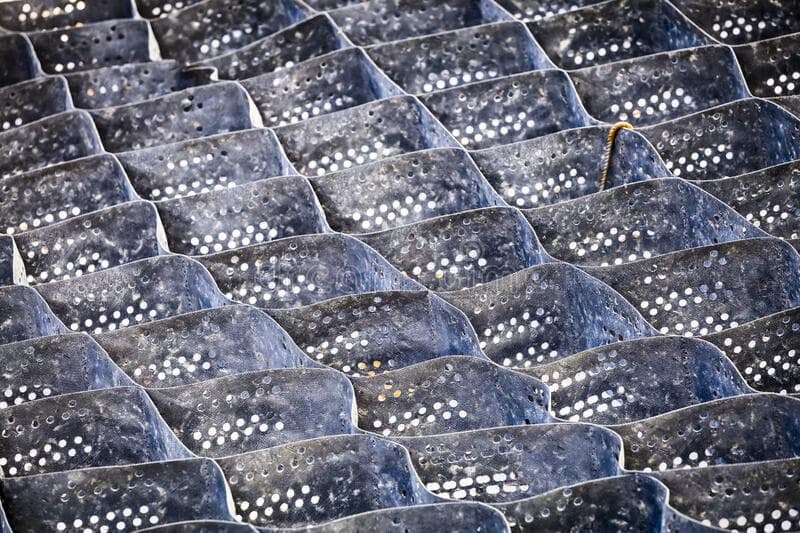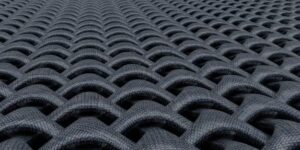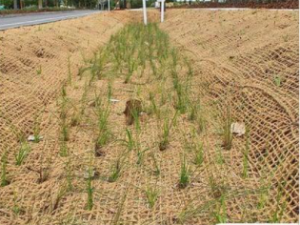The role of Geocells for Soil Stabilization
PC: Google
Wondering what the buzz is about Geocell technology? It is the new and innovative 3D honeycomb Cellular Confinement Systems specifically for soil stabilization and reinforcement. Geocells are made of high-density polyethylene (HDPE). They are in extensive use in the civil engineering and infrastructure sectors. The honeycomb/cage-like structures are filled with on-site granular materials that restrict soil movement and provide unparalleled stability and stiffness. Stabilizing weak soils or soft and unsteady soils is difficult but of utmost importance in various infrastructure and geotechnical engineering projects. The role of geocells in soil stabilization is indispensable. It is, in fact, the ultimate solution for weak soils.
Ocean Geosynthetics is the undisputed leader in Geocell technology, manufacturing high-quality geocells for soil stabilization.
Geocell technology dates back to the 1970s when they were more popular as cellular confinement systems. The U.S. Army Corps of Engineers devised it to build tactical roads where the ground had soft soil. After experimenting with plastic pipe mats, aluminum slotted sheets, and prefabricated polymers or sand grids, the Geocells are today made of HDPE.
Advantages of Geocells:
Primarily engineered for soil stabilization, geocells also find use in construction materials and erosion control. Some of the most significant advantages of the Geocell technology include:
- Robust Structure: Strong yet lightweight, the three-dimensional HDPE structures form a tight and interwoven honeycomb-like system tightly packed with loose soils or granular fill, confining them compactly, providing robust stiffness and performance.
- Ease of Installation: Like most other geosynthetics, the installation of Geocells is not a complicated process and can be installed by unskilled labor in any climatic condition, saving time and cost.
- Cost-Efficient: Easy to transport, they save logistics expenses. High durability translates into a long service life and reduced maintenance costs. Even in terms of manufacture and installation, the Geocells are economical. They bring down the overall cost of your project.
- Environmentally-Friendly: Again, coming from a class of geosynthetics that are themselves ecologically safe, Geocells are environmentally friendly, use readily available on-site fill, and reduce carbon footprint.
What is Geocell reinforcement? What are the primary Geocell applications?
Geocell reinforcement is nothing but ground improvement or stabilization. Soft soils are unstable and give way under heavy loads. The process of deploying Geocells to improve the bearing capacity of soft, loose, or weak soils is termed Geocell reinforcement. The panels are expandable, and the honeycomb structure keeps the infill together, providing stability.
Some significant Geocell applications include:
- Geocells help with the stabilization of pavements in the roadway sector, providing robust support on weak subgrades.
- In the railway sector, they come handy for trackbed construction in conjunction with geogrids and geocomposites.
- As cellular confinement systems, they help with the stabilization of slopes and retaining walls, preventing erosion.
- In the oil and gas/energy sector, geocells provide the reinforcement needed during drilling and exploration activities.
- They also act as a protective lining for hydraulic structures.
- They are not just reinforcing structures but also facilitate adequate drainage.
Ocean Geosynthetics, the Geocell manufacturers in India, have unmatched products, excellent service, and competitive prices. With an experience of over two decades, it is a name synonymous with innovative engineering products manufactured under stringent quality control guidelines.
Ocean Geosynthetics, the wise choice for 3D Geocell technology.
Frequently Asked Questions (FAQ)
Can Geocell be used in green roof systems?
Yes, Geocell can be used in green roof systems to retain and distribute water, promote plant growth, and prevent soil erosion.
Is Geocell resistant to chemical degradation?
Yes, Geocell is generally resistant to chemical degradation, but it’s important to consider specific chemical exposures and consult product guidelines.
Can Geocell be used in earthquake-prone areas?
Yes, Geocell can be used in earthquake-prone areas to improve soil stability and mitigate the effects of ground shaking.




